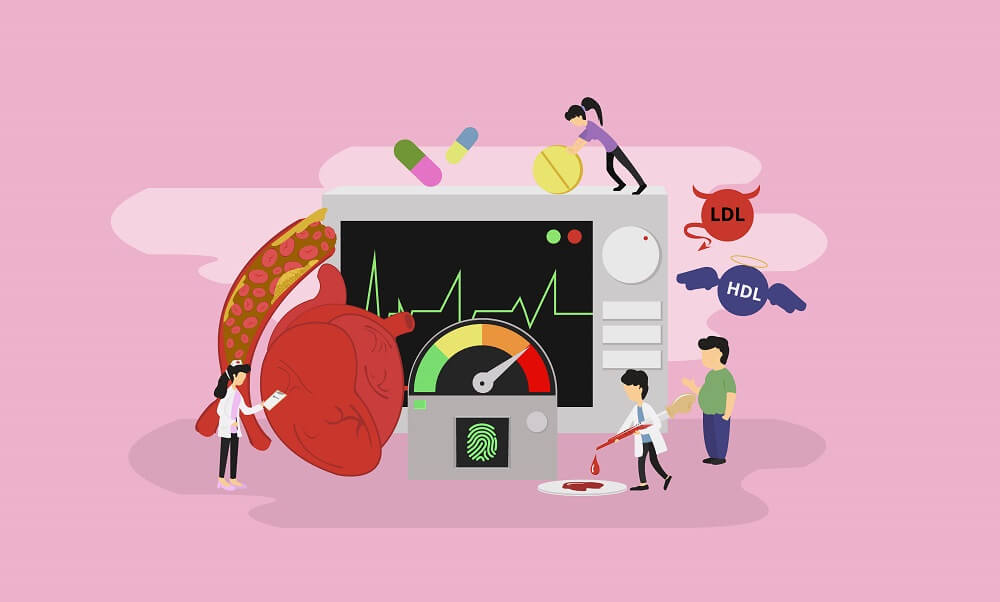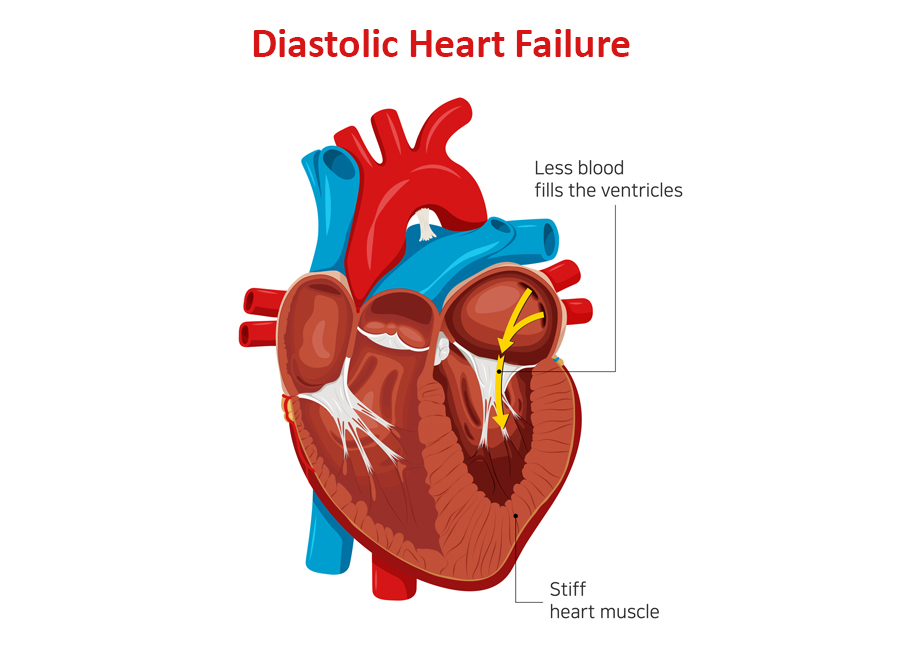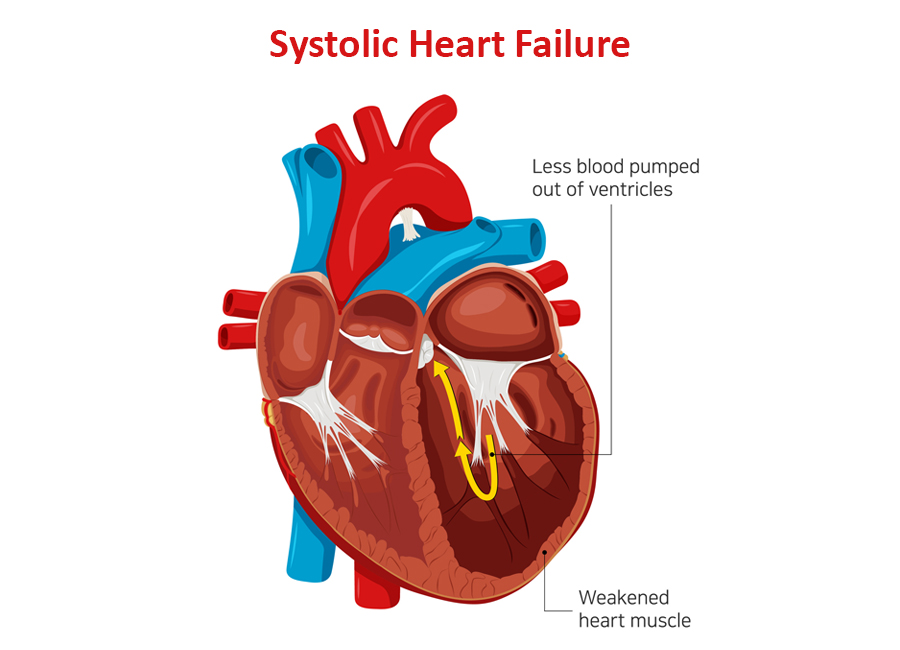Heart disease remains a significant global health concern, accounting for a considerable number of deaths worldwide. While it is well known that factors such as high blood pressure, high cholesterol levels, and obesity can contribute to heart disease.
diabetes / Dr Raghu
There are many scenarios where you might want to see a doctor and find out whether you’ve developed heart failure. Perhaps you have a history of heart disease in the family and would like to assess your risk levels.
Or you might have developed symptoms, such as shortness of breath, chest pain, and swollen feet, that are indicative of heart failure. (Check out our previous article for a detailed glimpse of heart failure symptoms.)
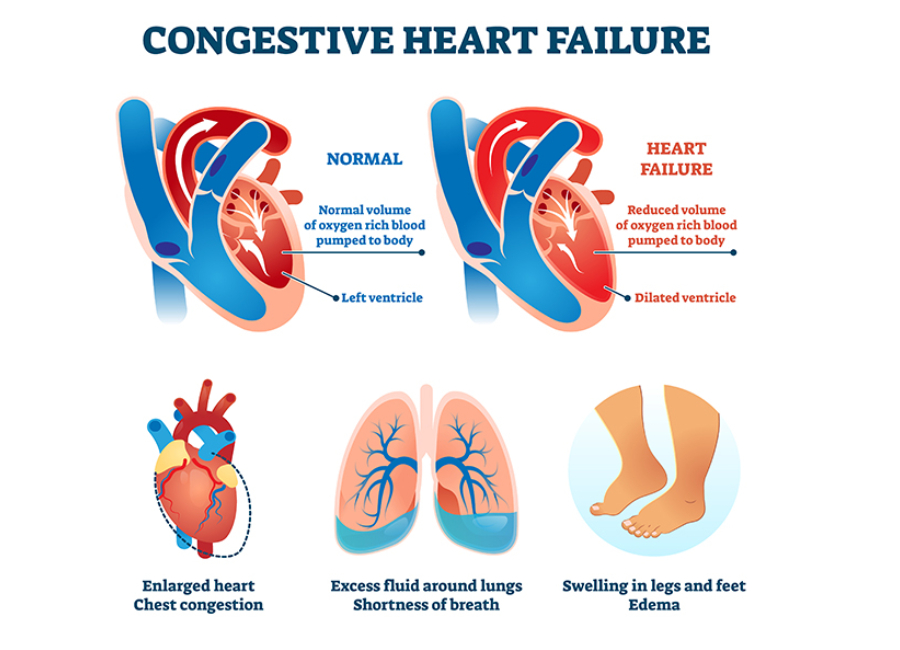
Or you might have completed an initial round of investigation and want a closer look at the root cause of heart failure. In any case, it’s essential to have a fair idea of the steps involved in diagnosing heart failure. Let’s take a look.
Family History and Medical Background
Diagnostic efforts for heart failure serve two primary purposes :
- To determine the underlying cause
- To assess the extent of the heart’s malfunction
The first thing a doctor will do is get a complete picture of your medical history. They’ll want to know the details of any symptoms you might have been experiencing. Also, they’ll ask about your diet and lifestyle, including your habits pertaining to exercise, smoking, and alcohol consumption.
Additionally, they’ll ask one or more of the following questions:
- Do you have pre-existing conditions like high cholesterol levels, hypertension, diabetes, etc.?
- Have you undergone treatments like chemotherapy?
- Do you have a family history of cardiovascular diseases?
Your answers to these questions will give your doctor a better idea of your current physical condition.
Physical Examination
Next, the doctor will perform a thorough physical exam to analyze your heart activity. They’ll likely start by calculating your BMI and body fat percentage. Also, they’ll measure your vitals, including blood pressure and heart rate.
Additionally, they might use a stethoscope to identify abnormal heart sounds or murmurs that indicate a faulty heart valve. They’ll also watch out for soft noises or bruits to identify the narrowing of arteries.
They’ll examine your skin to see if it feels cold or looks discolored. They’ll also check your feet and abdomen for signs of fluid buildup. By the end of the physical exam, the doctor will have a better idea of your cardiovascular health.
Related : High Blood Pressure – Symptoms & Treatment
Diagnostic Tests
While a physical exam can indicate abnormal heart function, your doctor will likely run a few diagnostic tests to confirm the underlying cause of heart failure.
The most common tests include:
- Blood tests, such as complete blood count, lipid panel, liver and kidney function tests, and a fasting glucose test
- Brain natriuretic peptide (BNP) test to determine the risk of hospitalization and death due to heart failure
- Chest X-ray to detect enlarged heart muscle or fluid buildup around the heart
- 12-lead ECG to monitor the heart’s electrical activity and identify signs of a heart attack or irregular heartbeat
- Echocardiography for a closer look at the heart’s chambers and pumping action in real time
- Coronary angiography to identify coronary artery disease
Other tests like radionuclide ventriculography, exercise testing, and endomyocardial biopsy may also be prescribed.
Related : What is Coronary Angiogram?
In Conclusion
Diagnosing heart failure involves a combination of physical examination, blood tests, and non-invasive procedures like X-rays and ECG. The key is to identify the underlying cause of heart failure, so that your doctor can decide the right course of treatment.
Dr. C Raghu is an experienced cardiologist who specializes in interventional cardiology. If you or anyone you know is at risk of developing heart failure, reach out to Dr. Raghu for a thorough diagnosis.
Book Online Consultaion
Diagnosing Congestive Heart Failure Blog
Subscribe the Hearty Life Blogs
In our previous articles, we’ve discussed the symptoms of heart failure and the steps to diagnose the same. However, the course of treatment varies for every patient based on the type of heart failure they’ve developed.
Depending on the part of the heart’s pumping cycle that’s been affected, there are two types of heart failure. In this blog, we’ll take a closer look at diastolic dysfunction and its symptoms.
What Causes Diastolic Dysfunction?
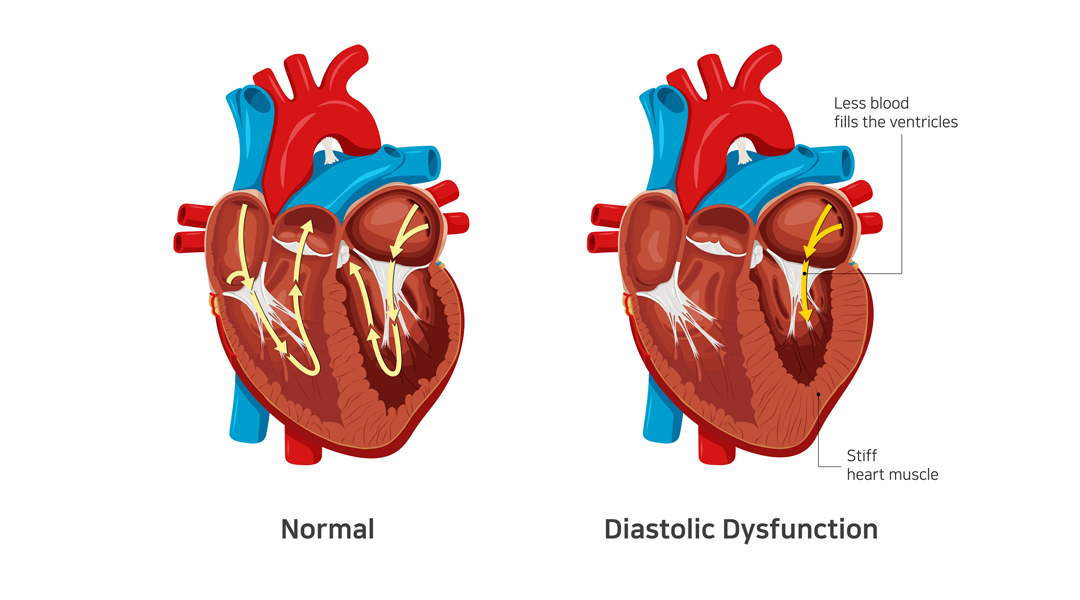
The diastolic phase refers to the part of the heart’s pumping cycle when the ventricles (lower chambers) relax and let blood flow in from the atria (upper chambers). Diastolic dysfunction is a condition in which the ventricles don’t relax enough. That, in turn, prevents the normal amount of blood from entering the heart.
Diastolic dysfunction is caused when the heart muscles become thicker and stiffer than usual. It’s more common in older women with hypertension and diabetes. If left untreated, it can lead to diastolic heart failure (also known as heart failure with preserved ejection fraction).
Related : Understanding Congestive Heart Failure Symptoms
What Does Preserved Ejection Fraction Mean?
Ejection fraction refers to the volume of blood pumped out from the heart’s left ventricle with each contraction. For a healthy heart, the number falls in the range of 55% to 65%. A lower ejection fraction is one of the most common indicators of heart failure.
However, it’s worth noting that many people with diastolic dysfunction have an ejection fraction of 50% or more (which is known as preserved ejection fraction). That means the left ventricle expels an adequate amount of oxygenated blood.
However, the heart muscle doesn’t relax enough to let a sufficient quantity of blood in. That, in turn, causes the excess blood to back up in the lungs and results in fluid buildup in the feet and abdomen.
How to differentiate systolic from diastolic dysfunction ?
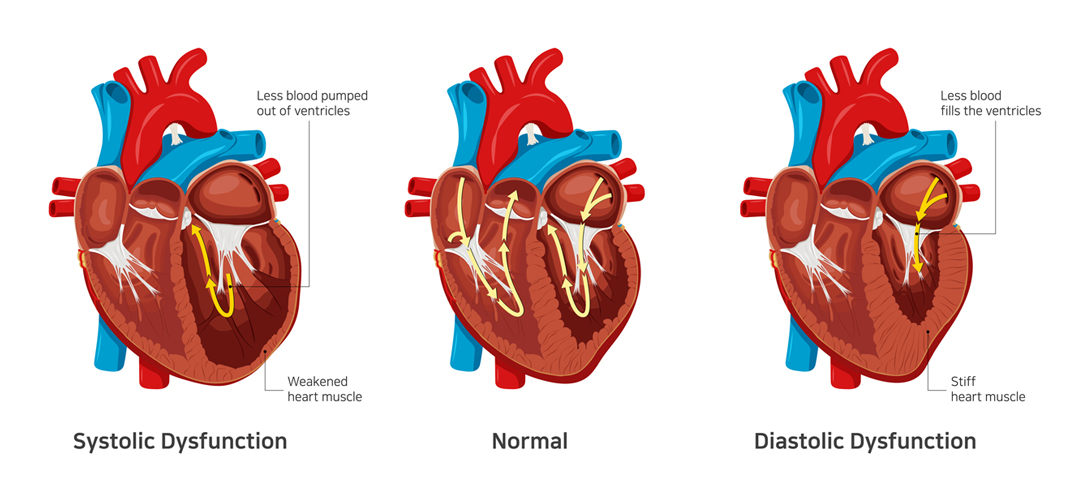
In contrast to systolic dysfunction where the heart muscle is “weak”, in diastolic dysfunction the heart is “stiff”. This means that the heart is unable to pump blood out of the heart in systolic dysfunction whereas the heart is unable to accept further blood in diastolic dysfunction. Both conditions lead to congestion or fluid accumulation in various organs of the body. Differentiation of heart failure from systolic and diastolic dysfunction is not possible as both diseases present with similar symptoms.
Which conditions lead to Diastolic dysfunction?
- Diastolic dysfunction appears consequent to uncontrolled or long-standing diabetes
- Hypertension
- Obesity as well as elderly people
- Women and atrial fibrillation
The best way to prevent and treat diastolic dysfunction is by effective control of the diseases mentioned above.
Symptoms of Diastolic Dysfunction
The most common symptom of diastolic dysfunction is congestion and shortness of breath due to the buildup of blood and fluid in the lungs. Breathing difficulties can get particularly worse during exertion or when lying.
Other symptoms of diastolic dysfunction include:
- Coughing and wheezing (due to lung congestion)
- Loss of appetite and nausea (due to fluid buildup around the liver and in the stomach)
- Swollen feet, legs, and abdomen (due to fluid accumulation)
If you experience any of the given symptoms, it’s crucial to consult a doctor for a proper diagnosis.
Treatment of Diastolic Dysfunction
Treatment of diastolic dysfunction involves a combination of medications (diuretics or water pills) and lifestyle changes. In severe cases, a patient might need left ventricular assist devices or a heart transplant.
Is Diastolic Dysfunction Serious?
In the long run, diastolic dysfunction can lead to diastolic heart failure. That, in turn, increases your risk of hospitalization and death. Therefore, you should pay close attention to your symptoms and reach out to a doctor whenever you notice anything unusual.
Dr. C Raghu is a renowned cardiologist who specializes in interventional cardiology. He has decades of experience in treating patients with different heart conditions. If you or anyone you know has developed symptoms like shortness of breath, swollen feet, loss of appetite, etc., contact Dr. Raghu to explore your treatment options.
Book Online Consultaion
What Are the Symptoms of Diastolic Dysfunction ? – Blog
Subscribe the Hearty Life Blogs
Heart failure is a serious condition that can result in organ damage and death (if left untreated). If you want more information about the different types and symptoms of heart failure, take a look at our previous blog posts.
In this article, we’ll explore the different causes of heart failure in greater detail. Let’s get started.
Heart Failure: A Closer Look
Heart failure refers to a condition where the heart is unable to pump blood throughout the body with maximum efficiency. It’s usually the result of progressive weakening, thickening, or stiffening of the heart muscles.
In the past, doctors used to refer to the condition as congestive cardiac failure because it leads to fluid buildup and congestion in the lungs. However, recent research shows that heart failure can cause several other symptoms.
Symptoms of Heart Failure
It’s possible for patients to develop heart failure without showing symptoms for months. That’s because they might attribute signs like confusion and fatigue to other factors, such as old age and stress.
However, if you’re at risk of developing heart failure, you should watch out for the following symptoms:
- Swelling in the abdomen, feet, and legs
- Shortness of breath that worsens due to physical exertion or when lying down
- Weight gain due to fluid buildup
- Loss of appetite
- Pale or bluish skin
Related : Understanding Congestive Heart Failure Symptoms
Causes of Heart Failure
Heart failure can be the result of various underlying conditions, including hypertension, diabetes, chronic respiratory disease, cardiomyopathy, and coronary artery disease. Also, it can be caused by damage to the heart muscles due to a viral or bacterial infection or a previous heart attack.
Moreover, faulty heart valves can strain the cardiac muscles and lead to heart failure. Similarly, heart rhythm disturbances can create structural changes in the left ventricle and cause heart failure.
It’s worth noting that people with a family history of cardiac ailments are more prone to developing heart failure. Also, the risk is higher in seniors and people with an African-American ethnic background. Alcohol consumption, tobacco smoking, and substance abuse also increase the risk.
Types of Heart Failure
Depending on the phase of the heart’s pumping cycle that’s affected by congestive cardiac failure, the condition can be of two types:
- Systolic heart failure – Heart failure due to a problem in the contraction (systolic) phase of the pumping cycle; also known as heart failure with reduced ejection fraction.
- Diastolic heart failure – Heart failure due to a problem in the relaxed (diastolic) phase of the pumping cycle; also known as heart failure with preserved ejection fraction.
Heart failure can also be categorized as:
- Left-sided heart failure (caused by a weak left ventricle)
- Right-sided heart failure (caused by a weak right ventricle)
Related : Types of Heart Failure
Stages of Heart Failure
The American Heart Association (AHA) and the American College of Cardiology (ACC) have identified four distinct stages of heart failure based on the degree of severity. The course of treatment for a patient depends on the stage of heart failure they’re at.
Diagnosing Heart Failure
Heart failure is diagnosed through a series of lab tests, including ECG, echocardiogram, coronary angiography, chest X-ray, brain natriuretic peptide test, etc. Doctors recommend the right combination of tests to identify the causes of heart failure and devise a suitable treatment plan.
Dr. C Raghu is an eminent cardiologist with more than two decades of experience. He specializes in interventional cardiology and has helped a plethora of patients with different heart conditions. If you’ve been diagnosed with heart failure, feel free to consult Dr. Raghu to explore your treatment options.
Heart failure is a common condition with no known cure. However, proper treatment can control the disease progression and thus improve a patient’s quality of life and longevity. To decide the proper course of treatment, a doctor must first determine the type of heart failure a patient has developed.
Depending on the part of the heart’s pumping cycle that’s been affected, heart failure can be of two types – diastolic and systolic. You can learn more about the symptoms, causes, treatment of diastolic dysfunction and differentiation from systolic dysfunction in our previous article.
In this blog, we’ll delve deeper into systolic heart failure and understand its causes and symptoms.
Systolic Heart Failure: A Closer Look
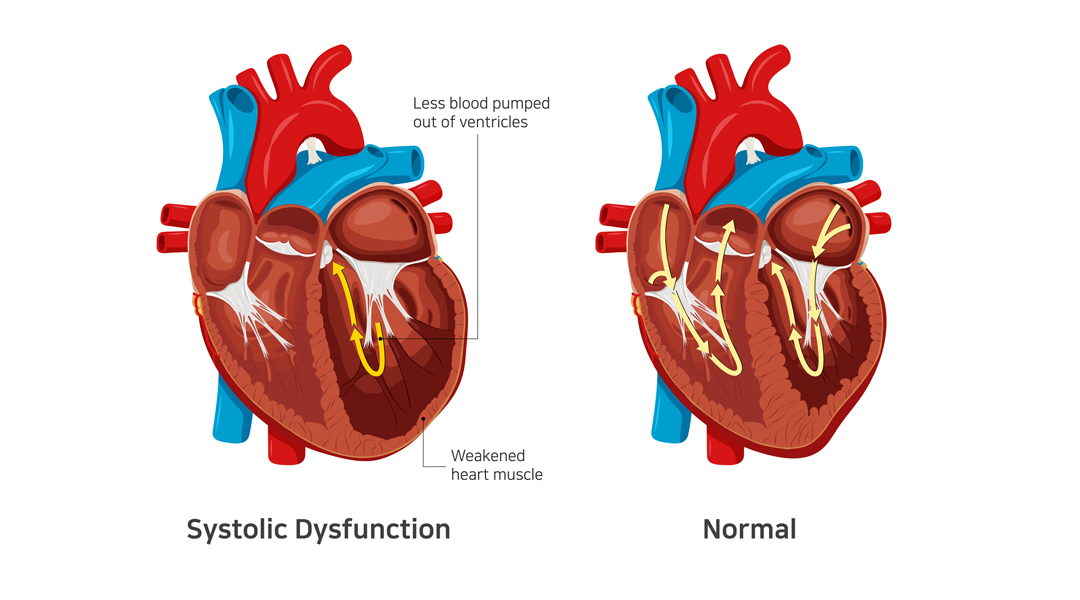
Systolic heart failure occurs due to a problem in the heart’s contraction (or systolic) phase. It’s characterized by stretching and weakening of the left ventricular muscle, due to which the heart pumps out less oxygenated blood to the body.
It’s also known as heart failure with reduced ejection infraction. As the condition worsens, it can also weaken the right ventricle and take a toll on its pumping power too.
Related: What Are the Symptoms of Diastolic Dysfunction?
Causes of Systolic Heart Failure
Systolic heart failure is caused by underlying medical conditions that damage the left ventricle. The most common causes include :
- Hypertension (the left ventricle has to use increased pressure to pump blood through the body)
- Coronary artery disease (buildup of cholesterol in the arteries) – with or without a heart attack.
- Dilated cardiomyopathy (weakening of the left ventricle due to an infection or long-term exposure to alcohol and narcotics)
- Abnormal heart rhythm (also known as atrial fibrillation)
- Previous heart attack
Additionally, people who are older or have diabetes are at a higher risk of developing systolic heart failure.
Related: Understanding Congestive Heart Failure Symptoms
Symptoms of Systolic Heart Failure
In systolic heart failure, an adequate amount of oxygen-rich blood doesn’t reach all organs. The most common indicator of the condition is a lower ejection fraction.
It can result in the following symptoms:
- Breathlessness – initially on exertion and in later stages even at rest or lying down.
- Swelling of feet, face, abdomen – due to fluid accumulation in various organs
- Engorged and pulsatile neck veins
- Confusion (due to a lack of oxygen supply in the brain)
- Weight gain (due to a buildup of excess fluid in the body)
- Fatigue (due to reduced blood supply to the muscles)
- Pale or bluish skin tone (due to restricted blood supply to the skin and other vital organs).
Diagnosis and Treatment Options
Typically, a doctor prescribes various tests, such as chest X-ray, ECG, and echocardiography, to diagnose systolic heart failure and its root cause. The treatment plan depends on the underlying cause.
In most cases, systolic heart failure is treated using one or more of the following medications:
- Beta-blockers
- Diuretics or water pills
- ACE inhibitors
- Digoxin
- Anticoagulants
Additionally, doctors recommend a healthy diet and lifestyle changes to improve cardiac health and manage underlying conditions, such as hypertension and diabetes.
Related: Diagnosing Congestive Heart Failure
In Conclusion
If left untreated, systolic heart failure can damage vital organs and even lead to death. It’s crucial that patients watch out for symptoms like swollen feet, mental confusion, and bluish skin color and seek medical treatment at the earliest.
Dr. C Raghu is an experienced cardiologist who specializes in interventional cardiology and TAVR. If you or anyone you know is experiencing symptoms of systolic heart failure, connect with Dr. Raghu for proper diagnosis and treatment.
Book Online Consultaion
What Is Systolic Heart Failure ? – Blog
Subscribe the Hearty Life Blogs
The heart is a critical organ that powers the human body. It beats roughly 100,000 times a day and pumps more than 2,000 tons of blood throughout the body.
Heart failure is a condition in which the heart gradually loses its pumping capacity. It can lead to symptoms like breathlessness, fluid buildup, and mental confusion. In the long run, it can result in organ damage and even death.
In this blog, we’ll take a closer look at the symptoms, causes, and treatment of congestive cardiac failure. Let’s dive right in.
Congestive Cardiac Failure and Heart Failure: Are They the Same?
Traditionally, doctors used the terms congestive cardiac failure or congestive heart failure to refer to the progressive deterioration of the heart’s pumping action. They used “congestion” to describe the buildup of fluid in the lungs due to heart failure.

However, subsequent studies have shown that the condition can lead to other symptoms, such as swollen feet, fatigue, and mental confusion. That’s why doctors use the term heart failure nowadays.
Causes of Congestive Heart Failure
Irrespective of whether you call it congestive cardiac failure or simply heart failure, its most common causes include:
- Heart valve damage
- Diabetes
- Heart rhythm disturbances
Additionally, damaged or dying heart tissue due to an infection or a previous heart attack can result in congestive cardiac failure.
Related : Mitral Valve Stenosis : Symptoms, Diagnosis, Treatment
Symptoms of Congestive Heart Failure
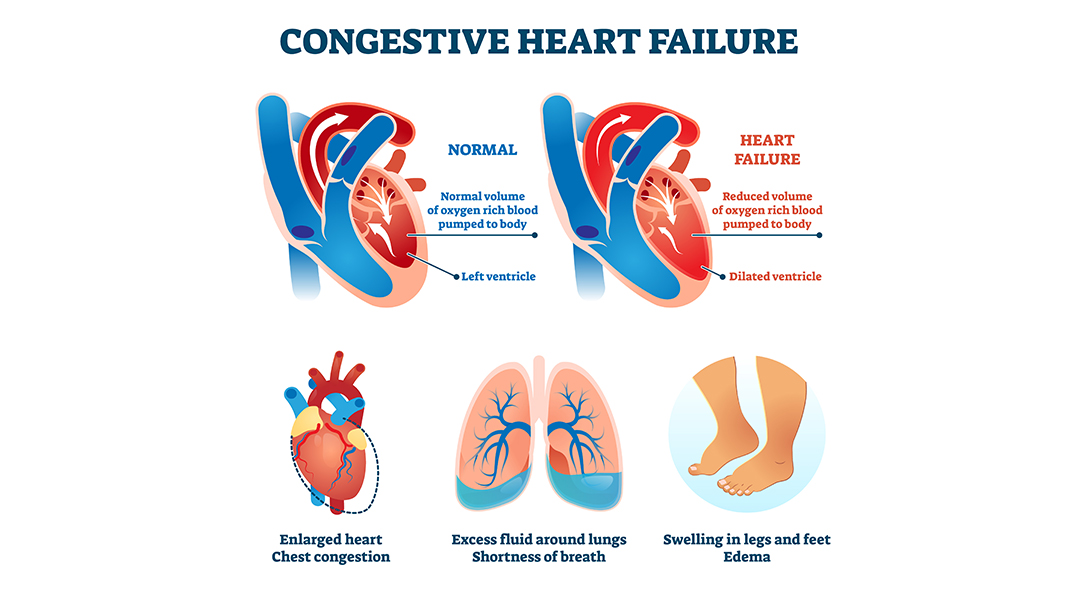
The symptoms of congestive heart failure depend on whether it causes a lack of oxygen supply to the organs or excess fluid buildup in the body.
In the first case, the symptoms include mental confusion, fatigue, and discolored or bluish skin. In the second case, heart failure can lead to symptoms, such as shortness of breath, coughing, wheezing, weight gain, swelling in the feet, legs, and abdomen, and loss of appetite.
Treatment of Congestive Heart Failure
The treatment of congestive heart failure depends on its underlying cause and the side of the heart that’s affected. A doctor will order a series of tests, such as chest X-ray, ECG, echocardiogram, and coronary angiography. Routine blood tests, such as lipid panel and electrolyte tests, might be needed, too.
Once the root cause is identified, your doctor can prescribe one or more of the following medications:
- Diuretic or water pills
- Beta-blockers
- ACE inhibitors or Angiotension receptor Neprilysin inhibitor
- Digoxin
- Anticoagulants
Additionally, the doctor will recommend lifestyle changes, including exercise, a low-sodium diet, and weight loss. Also, they’ll ask you to quit smoking and limit alcohol consumption. In extreme cases, patients need a heart transplant or ventricular assist device (VAD) to improve their quality of life.
Wrapping Up
Congestive cardiac failure is a chronic condition with no known cure. If left untreated, it can lead to organ damage and death. However, a proper treatment plan comprising lifestyle changes and medications can help manage various symptoms.
Dr. C Raghu is a renowned cardiologist and a specialist in interventional cardiology. If you or anyone you know is experiencing symptoms of heart failure, don’t hesitate to contact Dr. Raghu right away.
Book Online Consultaion
Congestive Cardiac Failure – Blog
Subscribe the Hearty Life Blogs
Copyright © 2023, Dr. Raghu. All rights reserved.
+91 95424 75650

+91 95424 75650

